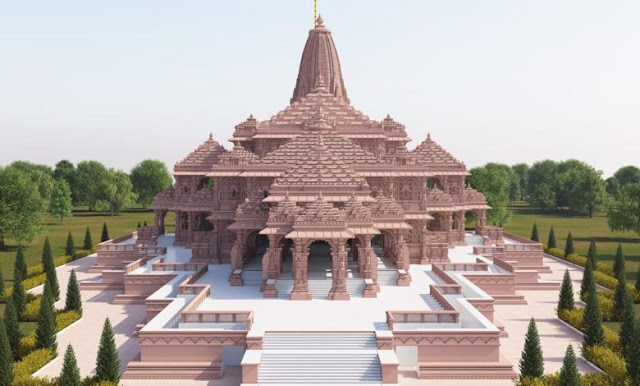Ram Mandir Inauguration: A Historic Milestone in India's Cultural Landscape
Introduction:
The inauguration of the Ram Mandir, dedicated to Lord Ram, in Ayodhya marks a historic moment in India's cultural and religious landscape. The construction of the temple has been a long-standing aspiration for millions of Hindus, and its completion has sparked discussions on various aspects, including the socio-political implications, historical significance, and the impact on communal harmony. This article aims to delve into the multifaceted dimensions surrounding the inauguration of the Ram Mandir, exploring its journey from a contentious historical issue to a symbol of national pride.
Historical Background:
The roots of the Ram Mandir issue trace back to the 16th century when the Babri Masjid was constructed in Ayodhya. The dispute over the site escalated in the 20th century, leading to communal tensions and legal battles. The turning point came in 1992 when the Babri Masjid was demolished by a group of activists, resulting in widespread violence and further intensifying the religious divide. The legal battle over the site continued for decades, culminating in the Supreme Court's landmark verdict in 2019, which paved the way for the construction of the Ram Mandir.
Socio-Political Implications:
The inauguration of the Ram Mandir carries significant socio-political implications. It has been a focal point for various political parties, and the construction of the temple became a symbol of religious identity and cultural pride. The ruling government's role in facilitating the temple's construction has sparked debates on the separation of religion and state, with some praising the move as a fulfillment of a long-standing demand and others expressing concerns about the potential erosion of secular values.
Impact on Communal Harmony:
While the construction of the Ram Mandir fulfills the aspirations of a large section of the Hindu population, there are concerns about its impact on communal harmony. Efforts have been made to emphasize unity and inclusivity, urging people of all faiths to participate in the celebrations. However, skeptics argue that the temple's construction may exacerbate existing religious tensions and challenge the idea of India as a secular and pluralistic society. The challenge lies in striking a balance between celebrating religious diversity and ensuring that the inauguration does not lead to social discord.
Cultural and Religious Significance:
The Ram Mandir holds immense cultural and religious significance for Hindus. It is believed to be the birthplace of Lord Ram, a revered deity in Hinduism, and the temple's construction is seen as the realization of a centuries-old dream. The architecture and design of the temple reflect a blend of historical and contemporary elements, capturing the essence of India's rich cultural heritage. The inauguration ceremony itself is marked by traditional rituals, prayers, and festivities, symbolizing the culmination of a spiritual journey for millions of devotees.
National Pride and Symbolism:
The completion and inauguration of the Ram Mandir have been embraced as a moment of national pride by many Indians. The temple is viewed not only as a religious site but also as a symbol of India's ancient civilization and cultural resilience. The construction of the temple has been portrayed as a testament to the country's ability to overcome historical challenges and unite for a common cause. The inauguration ceremony is attended by political leaders, religious figures, and people from all walks of life, reflecting the widespread significance of the event.
Challenges and Controversies:
Despite the joyous celebrations surrounding the inauguration, the Ram Mandir project has not been without its share of challenges and controversies. Questions have been raised about the funding of the temple, transparency in the construction process, and the allocation of resources for a religious project in a country with diverse needs. Additionally, concerns have been voiced about the potential impact on the environment and the displacement of local communities due to the temple's construction.
Conclusion:
The inauguration of the Ram Mandir in Ayodhya is a momentous occasion that encapsulates the complex interplay of history, religion, politics, and culture in India. It signifies the resolution of a longstanding dispute, while also raising questions about the delicate balance between religious freedom and secular ideals. As the nation comes together to celebrate this historic event, it is essential to reflect on the broader implications and navigate the path forward with a commitment to communal harmony, cultural diversity, and the principles that define the essence of India.




Comments
Post a Comment